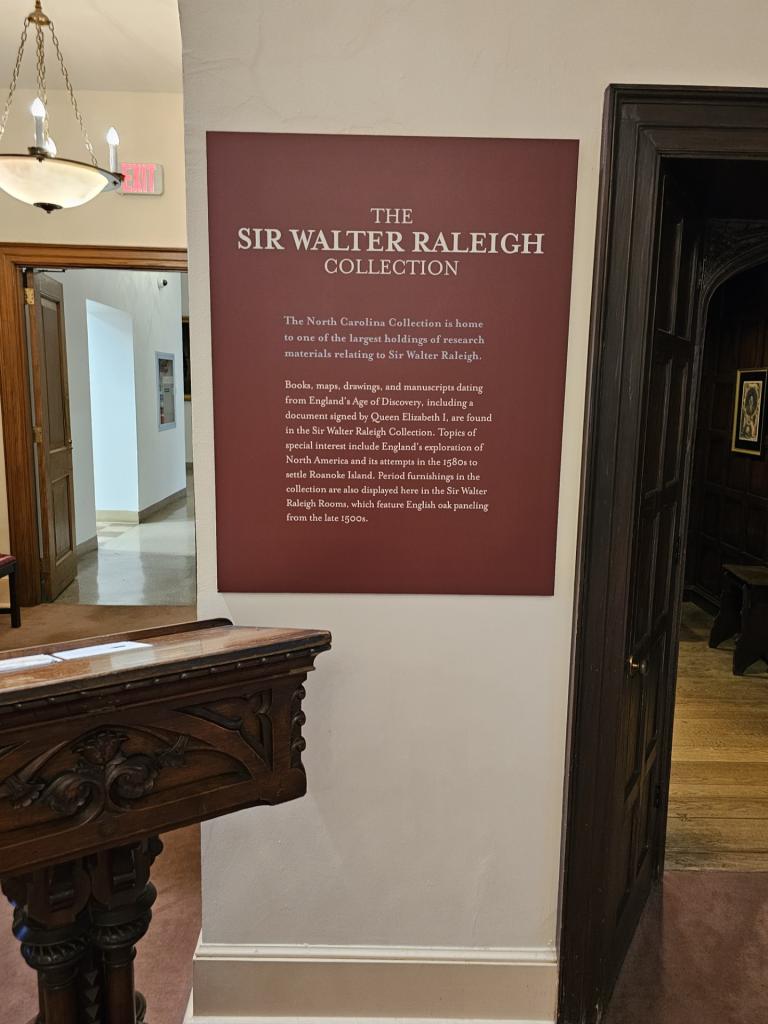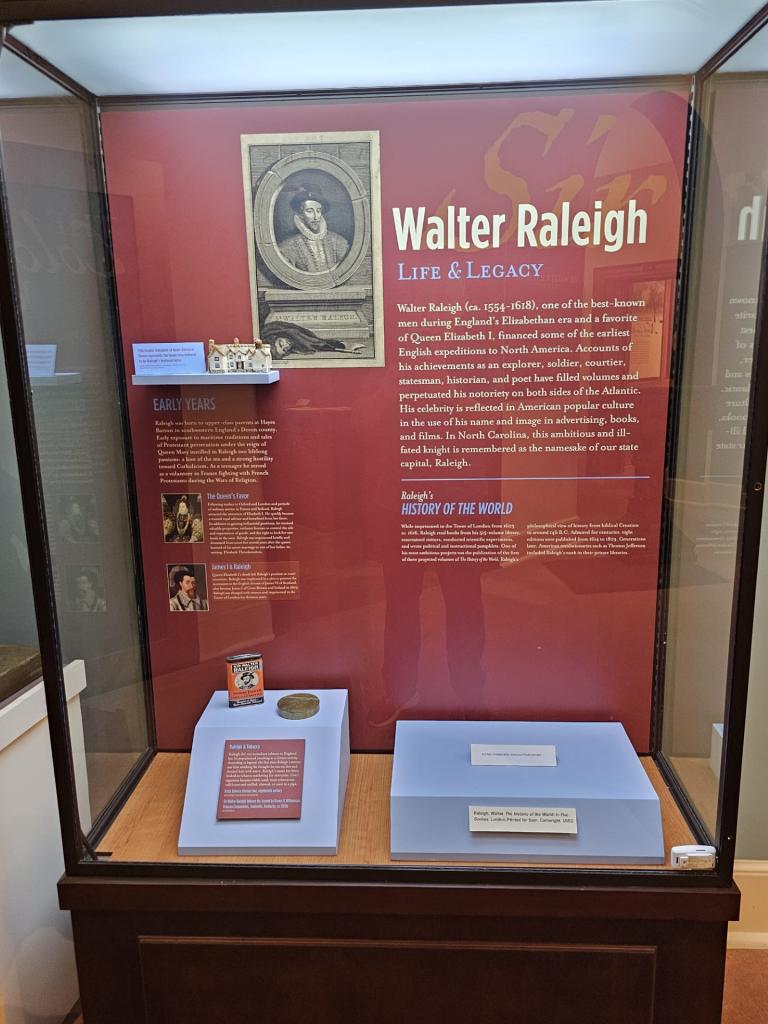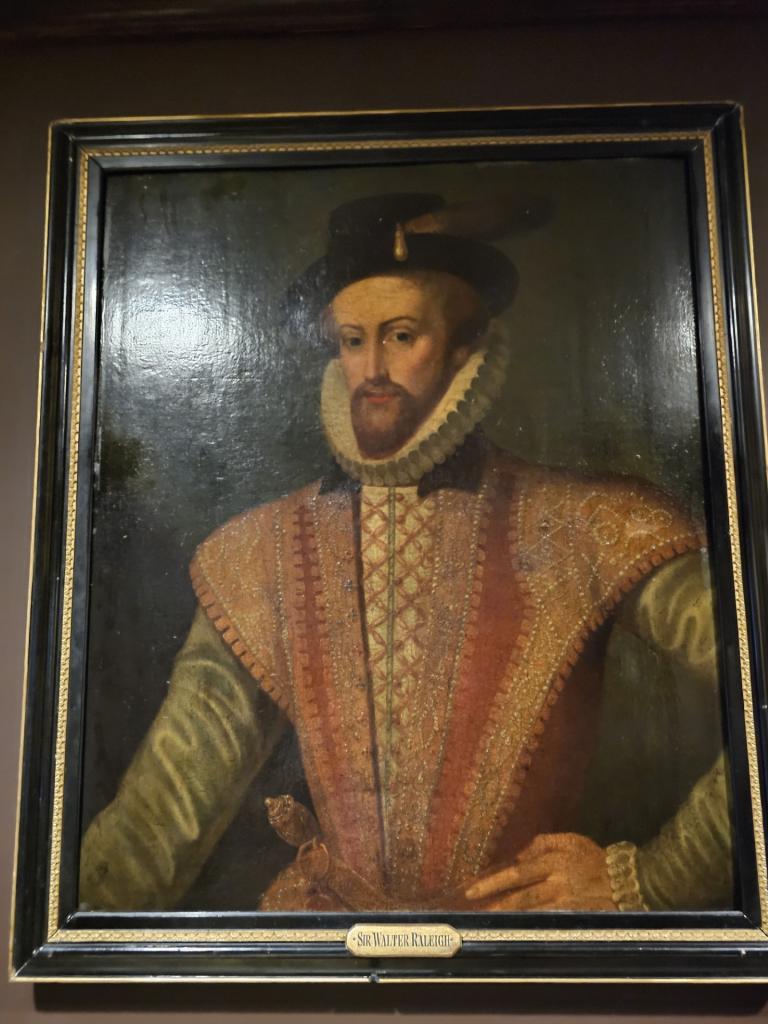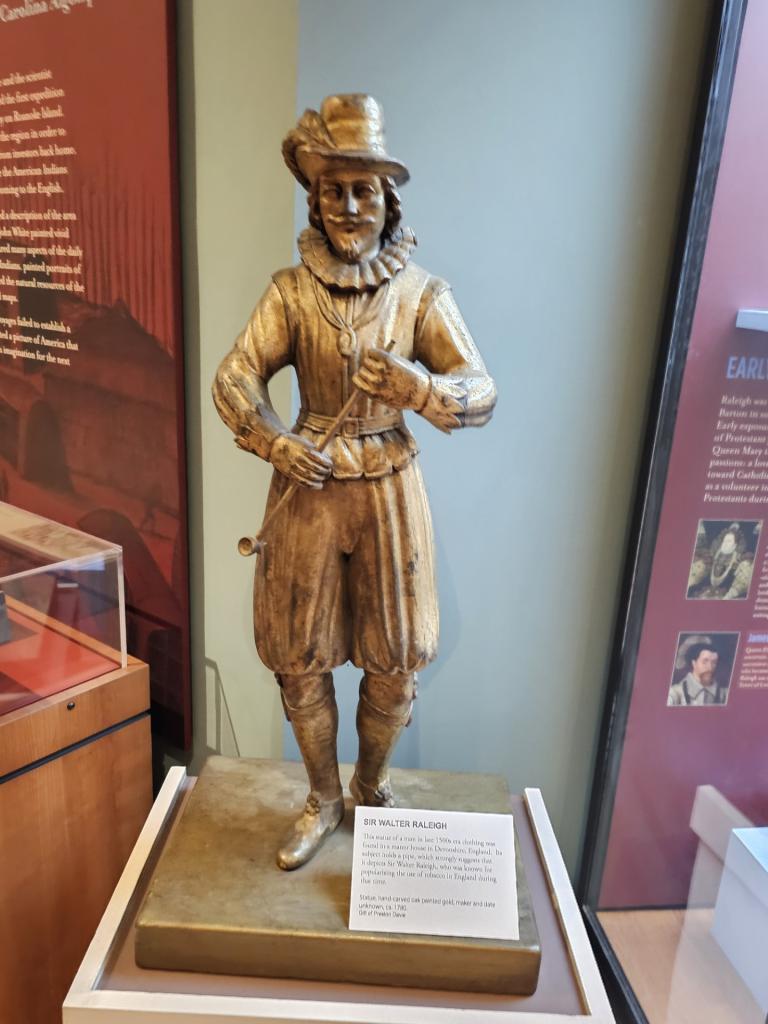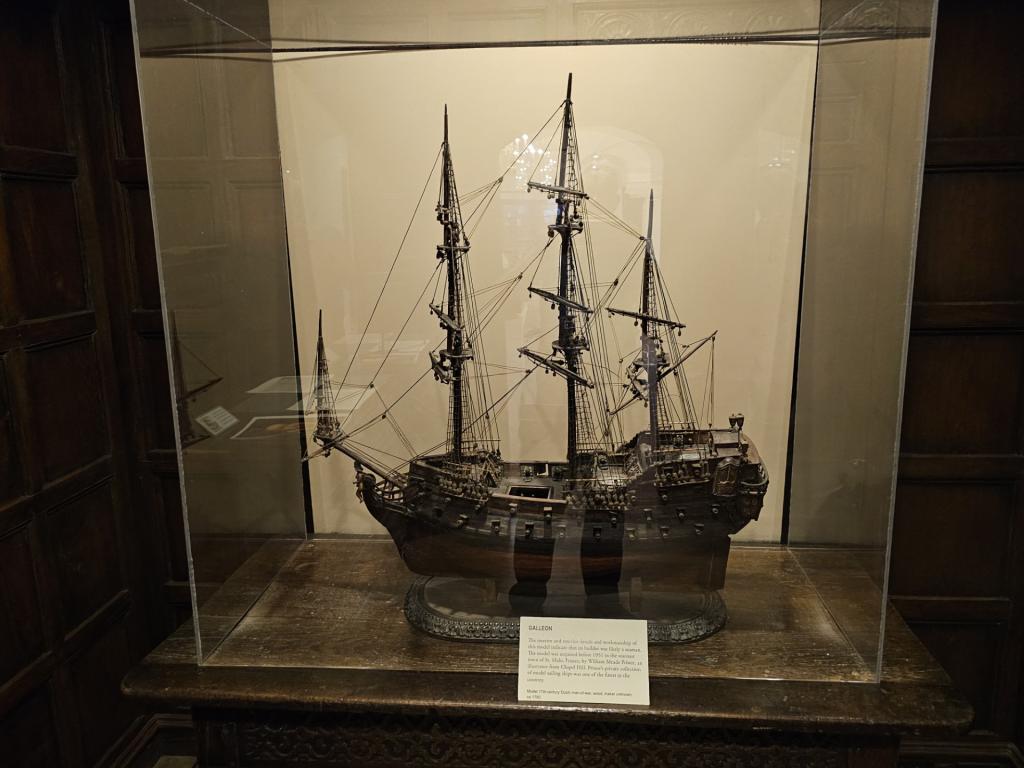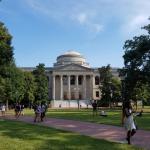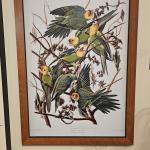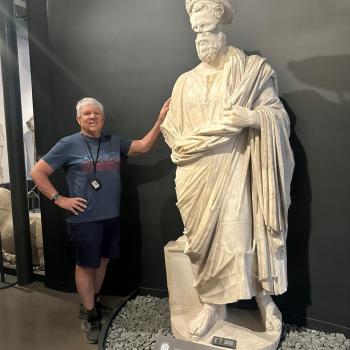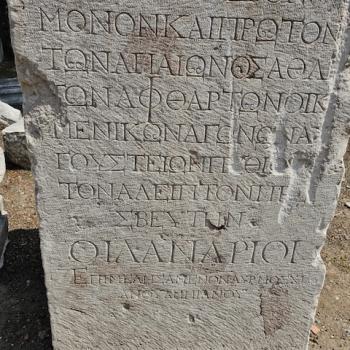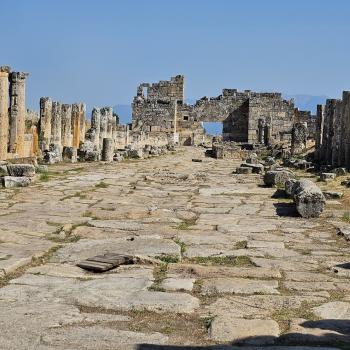My favorite part of the library these days is the Special Collections which you enter through a door on the left side of building. There is a standing exhibit about Sir Walter Raleigh (pronounced Rowley according to Chris Armitage, emeritus professor of English at UNC who taught there for about 50 years!).
Above is the oldest painting of the man, for whom the capital city of the state is named. Raleigh was a commoner, that through poetry written for Elizabeth I, and other connections became a favorite of that queen. He became an explorer, coming to the coast of North Carolina, and is famous for introducing the potato and tobacco back to England and Ireland. He advised the Queen on her Irish policy, and actually led troops there, slaughtering some papal troops fighting for Irish independence and the Catholic faith in 1580. Raleigh suppressed that rebellion. He is better known as an explorer furthering the colonization of America, in particular the southeastern coast of America. Raleigh was given a patent by Elizabeth I to explore Virginia. Here is a replica of the boat he would have sailed to America in.
But ironically, Raleigh himself did not explore ‘America’ he was mainly interested in finding the mythical El Dorado, and ransacking Spanish boats laden with gold. Here the fuller story as Wikipedia tells it…
“On March 25, 1584, Queen Elizabeth granted Raleigh a royal charter authorizing him to explore, colonise and rule any “remote, heathen and barbarous lands, countries and territories, not actually possessed of any Christian Prince or inhabited by Christian People”, in return for one-fifth of all the gold and silver that might be mined there.[20][21] This charter specified that Raleigh had seven years in which to establish a settlement, or else lose his right to do so. Raleigh and Elizabeth intended that the venture should provide riches from the New World and a base from which to send privateers on raids against the treasure fleets of Spain. The charter was originally given to Sir Humphrey Gilbert who pitched the idea to Queen Elizabeth I and died at sea while attempting to accomplish it.
On April 27, 1584, the Philip Amadas and Arthur Barlowe expedition set sail from England on an exploratory mission to determine what resources were available in North America. They returned with two of the local inhabitants, Manteo and Wanchese, in August 1584, and reported of their findings. The region (the majority of the east coast) received the name “Virginia” for the Virgin Queen Elizabeth I, which is the origin of the name of the modern day state.
In 1585, he sent a militarized group to North America to set up a fort to raid Spanish ships and become the first English colony in North America. The voyage was led by Sir Richard Grenville and the colony on Roanoke Island was governed by Ralph Lane. The colony ran out of food after clashes with the local inhabitants and eventually left with Sir Francis Drake in June 1586 after resupply attempts failed. Sir Richard Grenvile arrived shortly after the Lane colony left with Drake. He left supplies and 15 men on Roanoke Island and returned to England. They were never seen again.
On July 22, 1587, Raleigh attempted a second expedition, again establishing a settlement on Roanoke Island. This time, a more diverse group of settlers was sent, including some entire families, under the governance of John White. After a short while in America, White returned to England to obtain more supplies for the colony, planning to return in a year. Unfortunately for the colonists at Roanoke, one year became three. The first delay came when Queen Elizabeth I ordered all vessels to remain at port for potential use against the Spanish Armada. After England’s 1588 victory over the Spanish Armada, the ships were given permission to sail.
The second delay came after White’s small fleet set sail for Roanoke and his crew insisted on sailing first towards Cuba in hopes of capturing treasure-laden Spanish merchant ships. Enormous riches described by their pilot, an experienced Portuguese navigator hired by Raleigh, outweighed White’s objections to the delay.
When the supply ship arrived in Roanoke, three years later than planned, the colonists had disappeared. The only clue to their fate was the word “CROATOAN” and the letters “CRO” carved into tree trunks. White had arranged with the settlers that if they should move, the name of their destination be carved into a tree or corner post. This suggested the possibility that they had moved to Croatoan Island, but a hurricane prevented John White from investigating the island for survivors. Other speculation includes their having starved, or been swept away or lost at sea during the stormy weather of 1588. No further attempts at contact were recorded for some years. Whatever the fate of the settlers, the settlement is now remembered as the “Roanoke Colony” later known as the “Lost Colony”.
Raleigh himself never visited North America, although he led expeditions in 1595 and 1617 to the Orinoco river basin in South America in search of the golden city of El Dorado. These expeditions were funded primarily by Raleigh and his friends but never provided the steady stream of revenue necessary to maintain a colony in America.
We will have more to say about the Lost Colony in a further post, but for now, I recommend ya’ll go to Manteo and see the famous Lost Colony drama, which once starred Andy Griffith himself, who had a house there until he passed away. I also recommend you go enjoy the seafood at Manteo’s Tale of the Whale restaurant on the causeway over to the Outer Banks.


